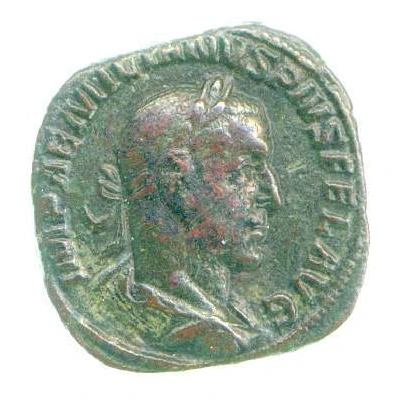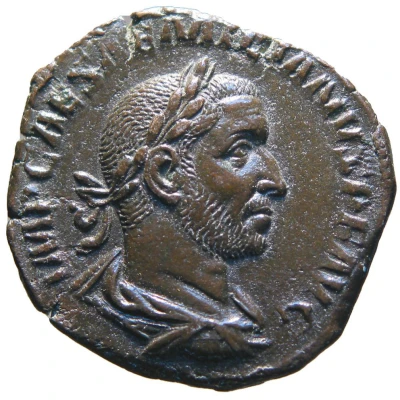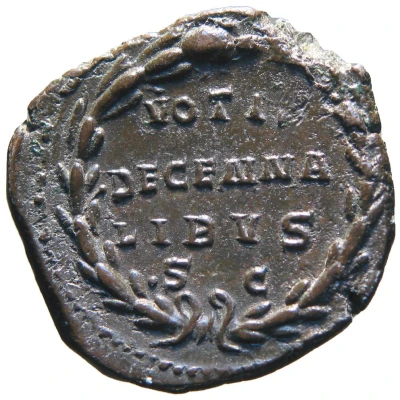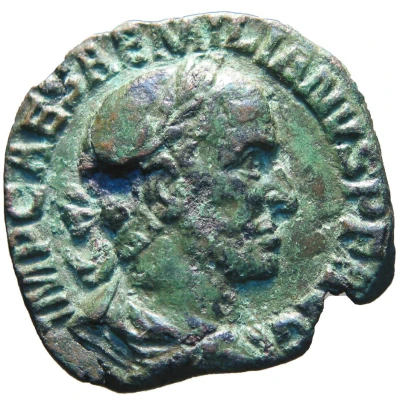
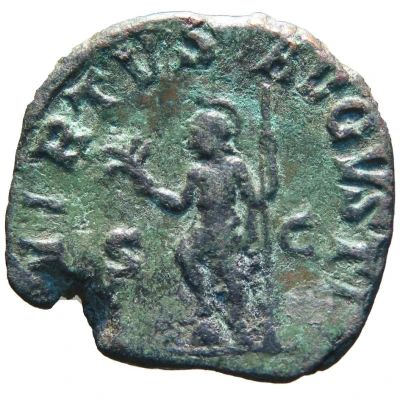

© Trustees of the British Museum
Sestertius - Aemilianus VIRTVS AVG S C; Virtus
253 year| Bronze | 14.6 g | - |
| Issuer | Rome › Roman Empire (27 BC - 395 AD) |
|---|---|
| Emperor | Aemilianus (Marcus Aemilus Aemilianus) (253) |
| Type | Standard circulation coin |
| Year | 253 |
| Value | Sestertius (⅛) |
| Currency | Antoninianus, Reform of Caracalla (AD 215 – 301) |
| Composition | Bronze |
| Weight | 14.6 g |
| Shape | Round (irregular) |
| Technique | Hammered |
| Demonetized | Yes |
| Updated | 2024-10-05 |
| Numista | N#284734 |
|---|---|
| Rarity index | 100% |
Reverse
Virtus, helmeted, in military attire, standing left, right foot on helmet, holding branch in right hand and spear in left hand.
Script: Latin
Lettering: VIRTVS AVG S C
Translation:
Virtus Augusti. Senatus Consultum.
Courage of the emperor. Decree of the senate.
Comment
Mass varies: 10.47–18.91 g;Example of this type:
Trustees of the British Museum
Source:
Online Coins of the Roman Empire (OCRE)
Interesting fact
The Sestertius - Aemilianus coin was minted during the reign of Emperor Aemilianus, who ruled the Roman Empire for a brief period of time in 253 AD. Despite his short reign, Aemilianus was able to issue a large number of coins, including the Sestertius - Aemilianus, which was widely circulated throughout the empire. One interesting fact about this coin is that it features an image of the goddess Virtus (VIRTVS AVG S C) on the reverse side, which was a common motif on Roman coins during this period. Virtus was the goddess of virtue and moral excellence, and her image was often used to promote the idea of Roman values and the importance of living a virtuous life. Overall, the Sestertius - Aemilianus coin is a fascinating piece of history that provides insight into the culture and values of ancient Rome, and it continues to be a popular collector's item among numismatists today.
